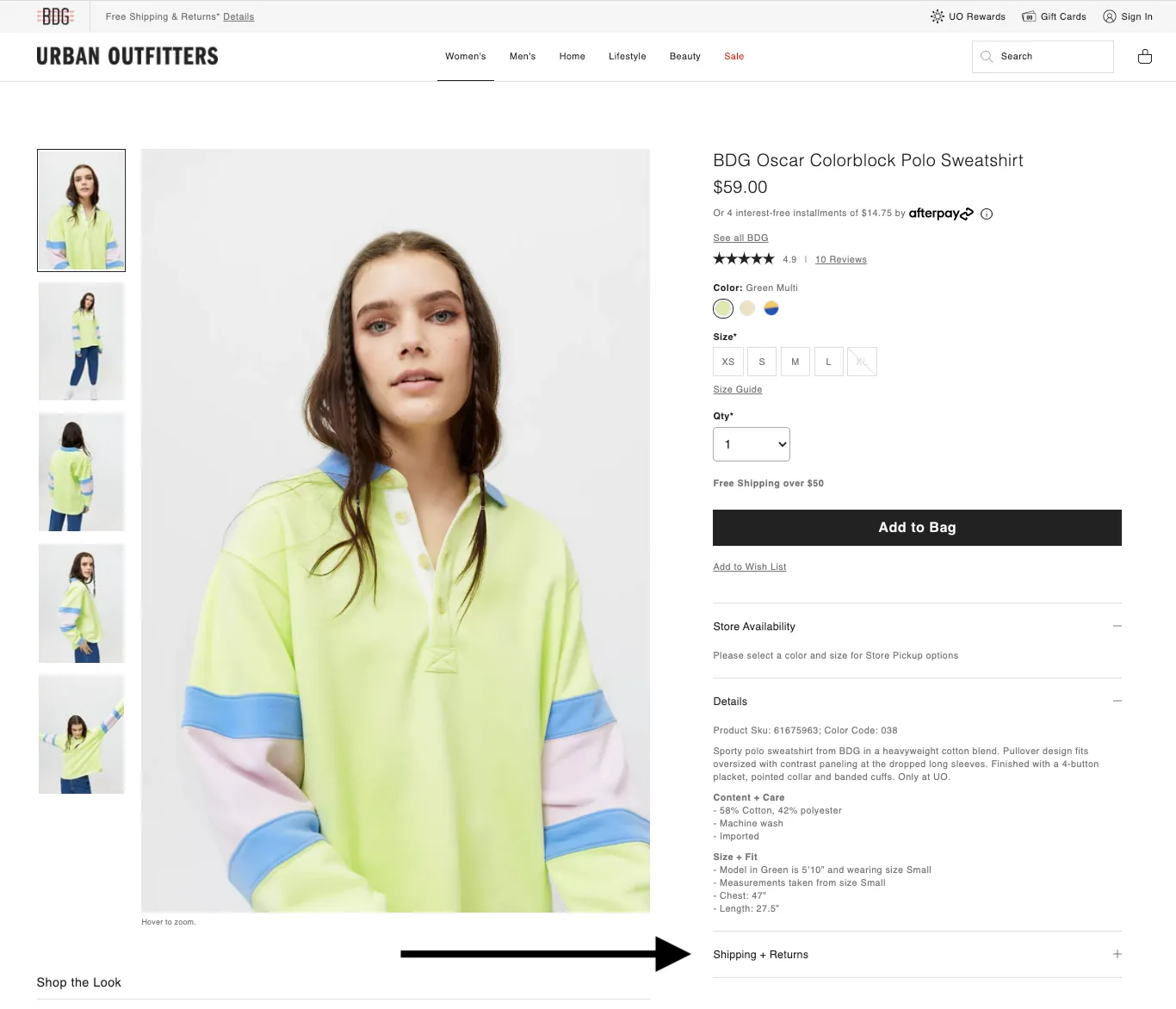
AI-powered delivery date estimates to boost conversion
Give shoppers peace of mind and protect and grow your bottom line
Personalized tracking experiences to build brand loyalty
Returns and exchanges management to mitigate fraud and reward best customers
Proactive communication to drive customer lifetime value
Delivery claim management to tackle fraud and build trust
7 Return Policy Examples for Ecommerce Retailers

Even with the best ecommerce returns management and tracking software, retailers still need to keep up on policy trends to make sure their business remains competitive. That’s why we compiled 7 best-in-class return policy examples to help you understand what’s new and what you need to implement today.
A great policy sets your ecommerce store apart from competitors, creates a strongly positive experience for your customers, and helps protect your profitability against losses due to fraudulent returns.
But when it comes to creating a policy that achieves these and other goals, you don’t need to accept massive losses or even free-for-all returns. Take a look at the following return policy examples to see how you can offer a best-in-class returns solution that works for both you and your customer.
Return policy example #1: Saks Fifth Avenue’s return windows
The return window in your return policy specifies how long customers have to send back approved returns. Common return windows range from 3 days to one year, but you can also use your designated return window to incentivize desired behaviors.
For instance, take Saks Fifth Avenue, which begins by stating that, “Returns are eligible for a full refund if returned within 30 days with a receipt.” However, the policy goes on to add, “To ensure your item is covered by our free return policy, returns must be initiated within 14 days of the ship date. Returns initiated after 14 days will have a $9.95 return charge deducted from your refund.”
By adding a monetary incentive, Saks encourages customers to return their items more quickly. The retailer can then restock returned items and resell them faster, preventing revenue and inventory from being tied up by slow returns.
Return policy example #2: DSW’s return windows
Another way ecommerce retailers can use their return policies to drive desirable behaviors is with a tiered return policy like DSW’s.
The popular footwear giant uses its return policy to encourage customers to join its VIP loyalty program by offering better return terms to program members. For example:
- DSW VIP Elite members have up to 365 days to make returns; non-members, DSW VIP Club, and DSW VIP Gold members have just 30 days.
- What’s more, non-members and members of the program’s lowest tier (DSW VIP Club) incur a $8.50 fee for online returns 一 members in DSW VIP Gold and DSW VIP Elite do not.
Return policy example #3: Dolls Kill’s return fees
Covering return shipping fees can quickly eat into retailers’ margins. Yet, minimizing these fees may be as simple as giving customers the choice of opting in or out of them.
Fashion retailer Dolls Kill is a great return policy example of putting the onus on customers. In their return policy, they state that, “You can pick free return shipping and store credit OR a refund to your original payment method with a return shipping fee.” In this way, the company preserves revenue by only offering free return shipping to customers that will return to purchase future items.
Return policy example #4: Lululemon’s refund options
Lululemon’s Fast Track return policy example offers an innovative option that drives positive brand sentiment while creating a positive customer experience.
Customers who are returning three or fewer items (“Like New” product excluded) can receive a store credit refund in about two hours after dropping their returns at FedEx or USPS locations. Knowing that they won’t have to wait weeks to receive their refunds may make customers more likely to shop through Lululemon for their activewear purchases.
(Editor’s note: a platform like Narvar can help a retailer enable faster refunds triggered by the carrier scan at drop-off like this and much more. For more information, schedule a demo with one of our experts.)
Return policy example #5: Dagne Dover’s return methods
Dagne Dover makes it easy for customers to mail their returns by leveraging a return location network. Return location networks like Narvar’s save customers time by allowing returns to be dropped off at convenient neighborhood points, including carrier locations, malls, pharmacies, and retail stores.
In fact, Narvar’s research has found that making use of a return location network results in 5 days’ faster return times, as well as a reduction in freight costs due to retailers’ ability to take advantage of commercial pickup rates.
Return policy example #6: Dick’s Sporting Goods’ return methods
COVID-19 may have been the initial impetus behind Dick’s Sporting Goods offering contactless, curbside returns. But the policy has proven so popular that the company has kept it in effect even after its locations have reopened from pandemic lockdowns.
The retailer does stipulate that only purchases made with debit or credit cards are eligible for curbside returns; cash and gift card transactions are excluded from the policy. What’s nice, however, is that ecommerce retailers of any size can implement a similar policy to improve customer satisfaction with the return process (as long as their order processing systems can accommodate the transactions).
Return policy example #7: Urban Outfitters’ return information visibility
Finally, crafting a great return policy isn’t just about what you say. It’s also about how clearly you state your policies to potential customers.
Prominently displaying your return terms helps customers feel more educated and empowered when making purchases, which may in turn reduce the number of return requests you receive. To see what this looks like in practice, consider Urban Outfitters, which embeds its shipping and returns information directly into its Product Description Pages (PDP).

Adding information you already have to highly visible locations on your site doesn’t require extensive software or sophisticated systems. That said, the return policy examples above prove that there’s clear merit to improving the methods you offer customers for both requesting and processing their returns.
If your existing returns process could use a refresh, reach out to a Narvar Returns specialist for a demo to see how Narvar can help give your customers the best returns experience they’ve ever had.
Get more insights from the experts
GET STARTED
Power every moment after the buy
Build trust. Protect margins. Drive growth — “Beyond Buy.”




















